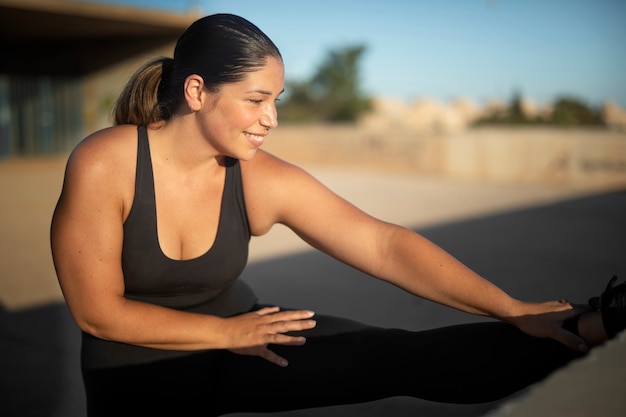Living with knee pain doesn’t mean you have to give up on fitness or wellness. In fact, one of the most powerful tools for managing discomfort, improving circulation, and enhancing mental clarity is completely free and always accessible: your breath. Breathwork, especially when practiced in short, intentional intervals, can support recovery, reduce inflammation, and increase oxygen flow—without putting pressure on your joints.
This guide shows you how to start a simple, effective 15-minute daily breathwork routine designed specifically for people with knee pain. We’ll explore safe, seated techniques inspired by interval training principles (similar to HIIT), include practical tracking methods, and offer motivation cues to keep you consistent.
Chronic knee pain can lead to reduced physical activity, which in turn decreases circulation and muscle strength. While movement is important, so is recovery. Breathwork activates the parasympathetic nervous system, helping reduce stress hormones like cortisol that contribute to inflammation.
Controlled breathing increases oxygen delivery to tissues, supports lymphatic drainage, and can even improve joint mobility over time. Plus, because it’s done seated or lying down, it places zero strain on the knees—making it ideal for those managing pain or recovering from injury.

This routine uses timed intervals—similar to High-Intensity Interval Training (HIIT)—to alternate between active breathing phases and recovery breaths. It’s designed to energize, focus the mind, and enhance respiratory efficiency without physical strain.
1. Centering (3 minutes): Sit comfortably in a chair or lie down. Place hands on your lap or abdomen. Breathe naturally through your nose. Focus on the rise and fall of your breath. No need to change it—just observe.
2. Interval Rounds (6 minutes total): Perform three rounds of the following 2-minute cycle:
This alternation mimics HIIT—activating the nervous system briefly, then allowing recovery. It builds breath stamina without joint impact.
3. Cooling Breath (3 minutes): Practice Sheetali or Sheetkari breathing (inhale through curled tongue or clenched teeth, exhale through nose) to cool the body and calm inflammation. If uncomfortable, use slow diaphragmatic breaths instead.
4. Stillness & Integration (3 minutes): Sit in silence. Notice body sensations, especially around the knees. Observe any shifts in tension, warmth, or ease. Gently end the session.

Consistency is key. Use these easy tracking ideas to stay on course:
Motivation fades—cues help. Try these science-backed prompts:
While breathwork is low-risk, listen to your body. Stop if you feel dizzy or strained. Avoid forceful techniques if you have cardiovascular issues. Always prioritize comfort—use pillows for support, and keep sessions seated if needed.
Over time, you may notice improved sleep, reduced stiffness, and greater mental resilience. These benefits compound—even with just 15 minutes a day.
You don’t need to run, stretch, or lift weights to support your joint health. Breathwork offers a gentle, powerful way to enhance recovery, reduce pain perception, and reclaim control over your well-being. With this simple 15-minute daily plan, anyone—even those with knee pain—can build a sustainable, energizing practice rooted in science and self-awareness.
Start today. Breathe deeply. Heal from within.

Wellness

Wellness

Wellness

Wellness

Wellness

Wellness

Fitness

Fitness

Health

Fitness

Wellness

Fitness

Health

Fitness

Health

Health